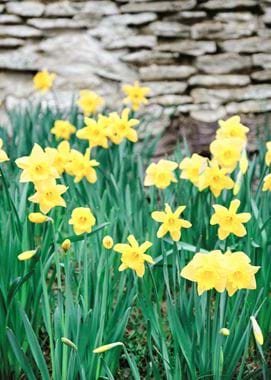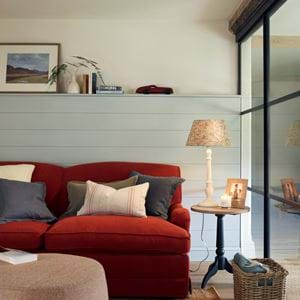March’s flower
March’s flower
For many of us, daffodils mark the beginning of spring. While snowdrops and crocuses may be the first to flower in the new year, it’s not until daffodils reach their peak in March that we properly leave winter behind.
It’s easy to find British-grown daffodils at this time of year – many growers in the south of the country, where the climate is a few degrees warmer, can even have them available from December and January. Our native species, Narcissus pseudonarcissus, can be seen growing wild, particularly in woodland. But, there are also over 25 species and around 13,000 hybrid varieties in a vast array of shapes, sizes and colours, including white, green and pink, that can be found in gardens, parks and as bunches in shops.
Daffodils are also an intrinsic part of this country’s heritage, from Wordsworth’s well-known ‘host of golden daffodils’ to the national flower of Wales. It might come as a surprise then, to know that they hail from southern Europe and North Africa, and were introduced to Britain by the Romans. In fact, much of the mythology surrounding the daffodil comes from Ancient Greece. It takes its Latin name from Narcissus who, the story goes, was incredibly beautiful, but also so proud that he rejected anyone who loved him. Nemesis, the goddess of vengeance, decided to punish him for this. She led him to a pool of water where, seeing his own reflection for the first time, he too fell in love. Transfixed, he refused to move from the pool and eventually wasted away, leaving a single daffodil in his place. It’s thought that the drooping silhouette of the flower symbolises Narcissus bending over the pool, and that the corona – the ‘trumpet’ in the centre – is a cup filled with his tears.
The medicinal uses for daffodils have also been explored throughout history. Despite being highly toxic, they’ve been used in attempts to relieve everything from whooping cough to minor burns. Currently, they’re grown commercially in Wales to extract an alkaloid named galantamine that’s used in the treatment of Alzheimer’s disease, and research is being carried out in Copenhagen into how they might help with depression.
There are a few places where the display of daffodils is particularly impressive (from Thriplow near Cambridge to Powis Castle in Wales and Dora’s Field in Cumbria, which are all worth bookmarking for future years) but the beauty of the daffodil is its abundance, and carpets of daffodils that seem luminous after the muted landscapes of winter can be found in parks, roadsides and roundabouts the country over.







